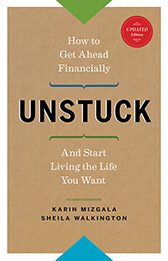By Sheila Walkington, Co-Founder and CFO of Money Coaches Canada
Perhaps you’re trying to save for retirement? Set aside funds for a rainy day? Pay down debt, including that hefty mortgage? And of course, pursue other important goals that make life worth living! Whew!
You could simply keep your money in a plain old bank savings account. However, there are much better options, some with significant growth and tax-savings potential. If you have extra cash or are committed to saving money, you may be asking:
- Are RSPs still a good investment?
- Should you be paying down your mortgage first?
- Or are Tax-Free Savings Accounts (TFSAs) a better savings strategy?
In general, investing in RSPs is a good idea, although there is no one-size-fits-all answer.
There are some advisors who suggest paying down your mortgage first and there are cases where that makes sense. But usually, it’s best not to wait to save. You may be paying your mortgage for 25 or 30 years so if you wait for the day it’s paid off, there may be little time to catch up on your savings for retirement and you lose all those years of RSP growth.
A two-part strategy that grows your RSP and shrinks your mortgage is to make your RSP contribution and then take any tax refund you receive and use it to pay down your mortgage.
There are other considerations in making your decision and here are some questions to ask yourself before you make your RSP contribution.
- Are you under the age of 50 and do you have 10 to 15 years left before you retire? If the answer is yes, contributing to an RSP usually makes sense.
- Are you in the highest income tax bracket? For every dollar you contribute to your RSP in the highest tax bracket, you reduce your taxable income, in effect getting you a tax refund of $535 for every $1,000 you invest if you live in BC. (Tax rates vary slightly from province to province).
- Is the interest rate on your mortgage less than 4%? If that’s the case, you may better off putting the money into an RSP than using the funds to pay down your mortgage.
- Do you have less than $300,000 invested in RSPs? Even if you think you’ll work past 65 and your expenses are modest, you’re still going to need to save and invest for retirement.
- Is your income less than $42,000 a year? If your income is less than $42,000, use a Tax-Free Savings Account (TFSA) instead of an RSP. You can shift the money to an RSP later if your income increases. You get a tax break for making a RSP contribution but you are taxed on every dollar when you start taking money out. So you’ll want to make sure that you’re getting a high enough tax break on the money you contribute. At $42,000 a year, your tax break is 22.7% if you are a BC resident.
- Is your income likely to be considerably higher in the coming years? Perhaps you’re working part-time or you’re earning what amounts to a training wage while you work towards credentials that could boost your income. It makes sense to get the largest tax break you can for your RSP contribution, so as in the case above, put your money into a TFSA and wait until you can get a refund that’s 33% or higher.
- Does your employer benefit plan match RSP contributions? If your company has any provision for matching RSP or pension contributions, take advantage of it.
- Should you borrow to make an RSP contribution? This is another one of those situations where the right answer for one client might be wrong for the next. If you have little or no taxable income, don’t borrow for an RSP. If you’re in the highest tax bracket, consider borrowing but only if you don’t owe money on credit cards or other high-interest debt. Borrow only if you’re able to pay off your RSP loan within the year and use your tax refund to help pay off your RSP loan.
If you have questions regarding how best to plan for retirement, or improve your overall financial well-being, a Money Coach can help. Or, if you are interested in a second opinion on your investment portfolio, consider the Investment Report Card.
This post first appeared in 2012. It has been updated with current data and/or the information and republished.




Excellent guidance on TFSAs and RSPs. I’ve seen friends and associates think nothing of spreading out an RSP loan over 5 or 6 years. The benefit of deferring tax remains correct but the loan, at the very, least should be paid down by the tax saved (approx 20 to 35%) depending on income and residence. Then paid down quickly beyond that so that you can plan ahead for next year’s RSP contribution.